Fireproofing
Affordable Protective Coating Experts with 5 Star Reviews
- Residential, Commercial, Industrial, Agricultural
- Local Experienced Experts
- Licensed and Insured
- FREE Competitive Quotes
Request FREE Fireproofing Quote
Discover Rebate Opportunities!
Fireproof Insulation

Fire Safety
Property Protection
Regulatory Compliance
Extended Structural Integrity
Reduced Insurance Costs
Enhanced Escape Time
Check Our Our Fireproofing Products!
High Quality Fireproofing by Local Professionals
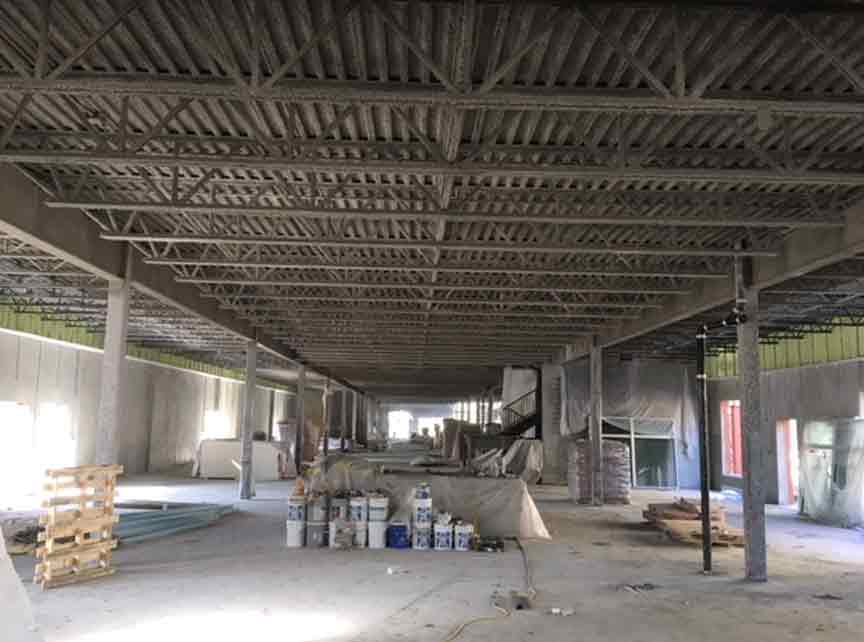
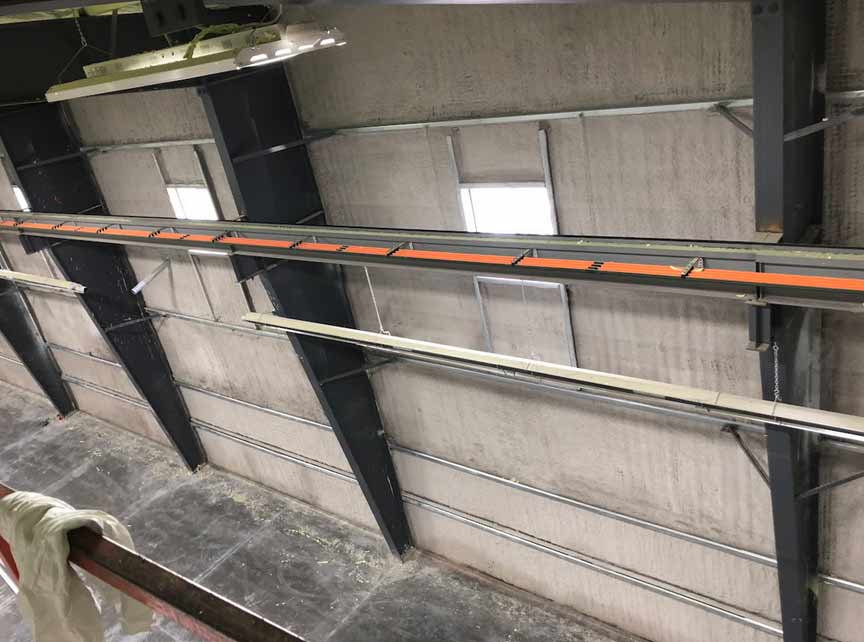
Advance Insulation Canada knows the many significant advantages to fireproofing. First and foremost, it dramatically improves fire safety by limiting the spread of fire and decreasing the likelihood of fire-related injuries and deaths. To accomplish this, fire-resistant materials and coatings are used to postpone the igniting and burning structural elements, giving people and firefighters more time to get out of the building safely.
Additionally, in business and manufacturing settings especially, fireproofing is an essential property safety measure. The risk of expensive things like machinery, supplies, and buildings from fire is reduced. Because the cost of fire damage in these settings is so high, this precaution is crucial.
Fireproofing also ensures adherence to local building codes and standards. In high-rise buildings, factories, and tunnels, fireproofing is mandated by many authorities. In addition to being the law, compliance with these standards is critical for securing permits and protecting the well-being of building occupants and employees.
When a building is fireproofed, not only are people and possessions safe, but the building itself is kept intact. Fire-resistant materials and coatings keep a building’s load-bearing elements stable even as the fire spreads, protecting the structure from further destruction. Learn more with our fireproofing FAQ.
Insurance premiums may also be lowered as a result of fireproofing. Many insurance providers offer property and business insurance premium discounts for installing fire safety features. This is because, in the event of a fire, the damage to such buildings is typically less severe.
Finally, fireproofing extends the amount of time people have to get out of dangerous situations. It buys firefighters precious time to get everyone out of the building safely and put out the fire.
Give us a call today or fill out our online form for a FREE quote. Our goal is to ensure that your home or business needs are properly addressed and you receive the service you deserve.
What Our Customers Say About Us!
Fireproofing Products
The spray-on fireproofing is a barrier, blocking heat transfer from the fire to the flammable surface below. This crucial function ensures that the underlying and vulnerable substrate maintains its structural integrity for longer during a fire emergency, giving residents more time to evacuate and providing a safer working environment for firefighters.
Structural steel members and fluted decking to provide up to 4 hours of fire protection
Most steel and concrete substrates
HiBAR application is typically for improving the fire endurance rating of metal building substrates such as:
Rigid structural substrates such as steel joists, beams, columns, floor/ceiling assemblies and exterior or partition wall units as spray-applied fireproofing
Prefabricated metal buildings, corrugated metal roof assemblies, the underside of concrete slabs and masonry or metal wall assemblies as thermal insulation
Ceilings and upper walls in noisy production areas or large rooms such as gymnasiums or swimming pools as spray-applied acoustical treatment
The spread of a fire is contained by creating fire-resisting compartments, which subdivide the building (vertically or horizontally).
Buildings must ensure that any openings and gaps are fire stopped to restrict both lateral and vertical fire spread. A fire stop is a fire protection system made of various components used to seal openings and joints in fire-resistance walls or floor assemblies.
When a fire occurs, these materials slow the spread of destructive substances, including:
Fire
Heat
Smoke
Toxic or combustible gases
Our Other Great Related Services
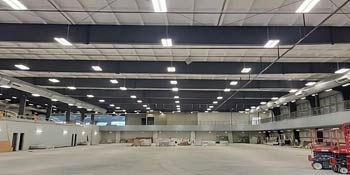
A specialized service that applies coatings to enhance both acoustic insulation and thermal insulation in buildings and structures.

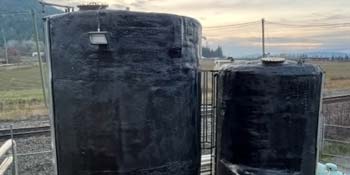
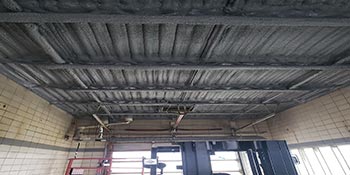
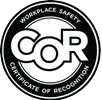


Feel free to call us today, or you can also complete our free quote form to request a complimentary quote. We are dedicated to making sure that we meet your requirements for your home or business and provide you with the level of service you merit.
Fireproofing FAQ
What are the primary materials used in fireproofing applications?
To make a building or structure fireproof, unique materials are used. These materials have been handpicked for their resistance to extreme heat and their ability to prevent the spread of fire. The primary goal of fireproofing is to reduce the severity of the damage caused by fire and to buy people more time to evacuate the building safely.
Special coatings, sprays, or plasters are often used to fireproof surfaces like steel and concrete. These coatings create a barrier impervious to high temperatures, helping to keep a building’s framework intact during a fire.
Critical infrastructure like tunnels and bridges can also benefit from using fireproofing materials to ensure their safety during a fire. Fireproofing is an important safety feature because it helps prevent damage to buildings and lives when a fire breaks out.
How does fireproofing differ in residential and industrial settings?
It is common practice in industrial settings to prioritize the safety of expensive machinery, supplies, and buildings. Using fire-resistant coatings and sprays on steel structures and vital machinery is a standard method of fireproofing in industrial settings. Furthermore, regulations of the materials or processes utilized in a given facility often necessitate unique approaches to fireproofing in the industrial sector.
The purpose of both home and business fireproofing is to make people safer in the event of a fire. However, the strategies and resources used may change to accommodate the specific difficulties and priorities of each location.
Can existing buildings be retrofitted with fireproofing measures?
The purpose of the renovation is to make the structure safer in the event of a fire and bring it up to code. Steel beams can have fireproof coatings applied to them, walls can be reinforced, fire doors can be upgraded, and spaces can be better separated in the event of a fire. This can make older buildings safer for their occupants and lessen the extent of damage they sustain in the event of a fire.
Fireproofing retrofits are crucial for bringing older buildings up to code and ensuring their inhabitants’ safety. Upgrades to a building’s fire safety systems are often mandated during remodeling or when the building’s purpose is altered. Regarding fire protection, retrofitting is preventative, as it helps lessen dangers and boosts security for everyone inside.
How do fireproofing materials affect a structure's aesthetics and design?
The aesthetic and design of a building may be altered in various ways depending on the fireproofing materials used. It all boils down to the specifics of the fireproofing materials, where they’re applied, and the building’s intended function.
Aesthetic Considerations: Fireproofing materials can sometimes be unobtrusive and have little to no effect on the visual appeal of a structure. Some fireproofing measures, such as coatings or sprays applied to structural elements like steel beams, may be imperceptible to the naked eye.
Architectural Integration: Fireproofing solutions are often integrated into the design of a building by designers and architects. For example, fireproof cladding or paint in the same color palette as the rest of the building can achieve this effect.
Fireproofing as a Design Element: Fireproofing materials can, in some cases, serve as a design element in and of themselves. An industrial or modern look can be achieved, for instance, by incorporating exposed fireproofed steel beams or columns into the design of the building.
Impact on Interior Design: Using fireproofing materials could affect interior design decisions. The interior design theme and material palette, for instance, can be affected by the choice of fire-resistant materials for wall coverings or decorative elements.
Fireproofing can have a positive or negative impact on the visual appeal of a building, depending on the project’s objectives, the materials used, and the ingenuity of the design team. When building or renovating, it is essential to balance fire prevention measures and the building’s aesthetics.
Are there environmentally friendly options for fireproofing?
Material recyclability promotes a circular economy and reduces waste. Non-toxic fireproofing reduces environmental impact. By preventing fire damage, fireproofing can indirectly boost energy efficiency by lowering resource-intensive reconstruction and repairs. For their sustainability and low environmental impact, fire-resistant gypsum boards and intumescent coatings are becoming more popular. This move toward eco-friendly fireproofing supports construction industry sustainability efforts to protect the environment and improve fire safety.
What are the key factors to consider when choosing fireproofing materials for a specific project?
Second, local building codes and regulations are crucial for legal compliance and safety because they specify fireproofing requirements. Third, fire resistance rating is critical because different materials have different fire resistance levels, and the required rating depends on building use, occupancy, and construction type.
The structure and materials of a building also affect the best fireproofing solution. Consider the cost of materials and installation against fire damage when assessing fireproofing materials.
Fire safety and aesthetics must be balanced, especially in architectural projects where fireproofing’s visual impact is essential.
Fireproofing materials vary in lifespan and maintenance, and some require more frequent inspections.
Fireproofing materials’ environmental impact is becoming more important, encouraging sustainable construction with eco-friendly materials. Finally, inspection and maintenance accessibility ensures that the chosen materials can be easily accessed for building maintenance throughout its lifespan.





